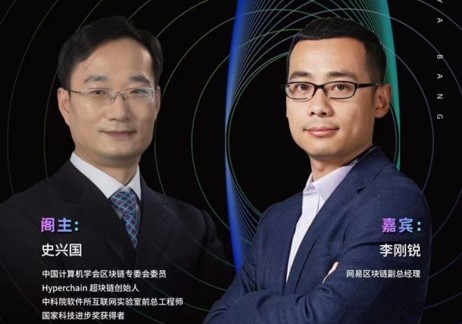
They represent teams of startups and giant enterprises respectively in the Web3 field, and examine the current development of Web3, meta-universe, and digital collections from multiple perspectives such as technology and business. In their words, professional discussions are vivid metaphors, but not boring words.
When talking about the difficulties and challenges of promoting the transformation of traditional enterprises to Web3, Mr. Shi Xingguo said, “From one perspective, we are mammals in species evolution, but we were originally a fish trying to climb from the sea to the land. From this day on, we can no longer regard ourselves as a fish. As for enterprises, once they really realize that they should evolve to the Web3 field, they actually cannot use their traditional enterprise perspective and thinking to consider themselves. I think this is the first and biggest challenge for enterprises to transition to Web3.” Li Gangrui said: “The sooner you start running with new legs, the greater the chances of success. The obstacles mentioned just now actually require enterprises to actively join and keep trying.”
When it comes to the question of “What advantages and disadvantages do giants and start-up teams have in the development of Web3?”, Li Gangrui frankly said that although there is a certain difference between giants and start-up companies in the Web3 field, I feel that everyone has equal opportunities. For giants and start-up teams, the difference may be more like one is an explorer and the other is a game-breaker. And said: “For the blockchain team I lead, there is no situation where the ship is too big to turn around, but we are a bit like an internal stormtrooper. Our team is more like a startup team in a big company. The pressure we bear is not less than that of the outside startup teams. Regardless of whether it is a big company or a start-up team, as long as everyone explores the right subdivision industry and the underlying logic of the business model can be established, everyone can succeed. Big companies can also choose to cooperate with start-up companies, and start-up companies can also rely on models and paths to attract investment from big companies. Scale is not the determining factor for whether business can be done.”
Regarding this topic, Mr. Shi Xingguo said, “In the Web3 era, the logic has evolved to ‘users come first, then equity assets in the platform, and then business. ” For this logic, equity assets have a stronger user aggregation effect, far stronger than the fission effect in the previous Web2 era. If the user accumulation in Web1 was a network effect, and in Web2 it was a social fission effect, then the user accumulation in Web3 is a convergence effect of equity assets, similar to a nuclear fusion-style upgrade. The potential of entrepreneurs in the Web3 era should not be underestimated. In another three to five years, when the world of Web3 is established, the giants may rejoice to say, ‘the business is still in my hands.’ But they may also find that the users have all gone to the Web3 entrepreneurial communities.”
Highlights of today’s talk:
- What rules does NetEase Blockchain follow when expanding new businesses?
- What are the difficulties and challenges for traditional enterprises to transform empowered by Web3?
- What advantages and disadvantages do giants and start-up teams have in exploring Web3?
- Can consortium chains be interconnected? What are the difficulties in the process?
- What is the next step for layout of the Meta Universe?
- How to understand the core logic and future trends of digital collections?
